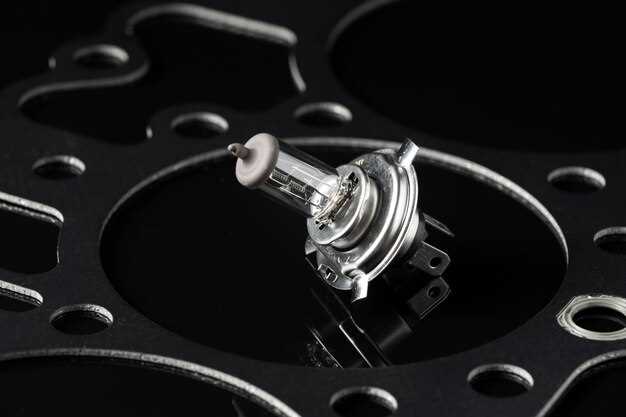
Steering dampers, often overlooked in discussions about vehicle suspension and handling, play a crucial role in enhancing the driving experience. These components are designed to manage the vibrations and oscillations that can occur in the steering system, providing greater stability and comfort, especially in demanding driving conditions.
The primary function of a steering damper is to reduce the effects of road imperfections and external forces on the steering wheel. By doing so, they help to maintain precise control of the vehicle, preventing excessive movement that could lead to loss of steering response. This is particularly beneficial for off-road enthusiasts and high-performance drivers who often encounter rough terrains and require optimal handling characteristics.
In addition to improved handling, the benefits of steering dampers extend to enhanced safety. By stabilizing the steering input, drivers can react more effectively to sudden changes in road conditions. This aspect is vital not only for personal safety but also for the safety of others on the road. Investing in a quality steering damper can lead to a more enjoyable and secure driving experience.
With various types of steering dampers available on the market, understanding their specific functions and advantages is essential for vehicle owners. This article will explore the mechanisms behind steering dampers and highlight their key benefits, empowering drivers to make informed decisions about enhancing their vehicle’s performance.
How Steering Dampers Improve Stability in Off-Road Vehicles
Steering dampers play a crucial role in enhancing the stability of off-road vehicles, especially in challenging terrains. One of their primary functions is to reduce the vibrations and jolts transmitted from the road to the steering wheel, which can occur when driving over uneven surfaces, rocks, or deep ruts. By absorbing these shocks, the damper helps maintain better control of the vehicle, allowing the driver to navigate obstacles more effectively.
Additionally, steering dampers help prevent “wheel shimmy,” a common issue in off-road conditions where the front wheels may experience rapid oscillation. This phenomenon can lead to a loss of steering control, increasing the risk of accidents. By dampening these rapid movements, the damper enhances steering responsiveness, providing the driver with a smoother and more predictable driving experience.
The installation of a steering damper can also improve tire life. Excessive vibration and uncontrolled movements can cause uneven tire wear, leading to more frequent replacements and higher maintenance costs. By stabilizing the steering system, dampers help ensure that tires make consistent contact with the ground, promoting even wear and extending their lifespan.
Moreover, steering dampers contribute to a more comfortable ride for passengers. The reduction of vibrations not only aids in vehicle control but also minimizes the discomfort experienced by occupants during rough travels. This factor is particularly important for off-road vehicles, where prolonged exposure to bumps can lead to fatigue and discomfort long before the journey is over.
In summary, steering dampers are essential for enhancing stability in off-road vehicles by absorbing shocks, preventing wheel shimmy, prolonging tire life, and providing a more comfortable experience. Their integration into the vehicle’s suspension system is vital for ensuring that off-road adventures can be undertaken with confidence and safety.
The Role of Steering Dampers in Reducing Fatigue During Long Rides

Steering dampers play a crucial role in enhancing rider comfort and reducing fatigue during extended motorcycle journeys. By stabilizing the handlebars and minimizing unwanted vibrations, these devices allow the rider to maintain better control over the motorcycle, contributing to a more enjoyable ride.
During long rides, the continuous adjustments required to keep the motorcycle on course can lead to physical strain. Steering dampers help mitigate this strain by absorbing and dampening abrupt steering movements, which can occur due to road imperfections or crosswinds. This stabilization translates to less effort needed to maneuver the bike, allowing riders to conserve energy over long distances.
Moreover, by calming the feedback that the rider receives through the handlebars, steering dampers reduce mental fatigue. Riders can focus better on their surroundings and navigate challenging conditions without the added distraction of constant adjustments. The enhanced stability provided by the damper allows for smoother cornering and reduces the likelihood of sudden jolts, leading to an overall more relaxed riding experience.
Additionally, steering dampers can contribute to longer ride times without increased discomfort. By decreasing vibrations and providing a steadier feel, these devices help protect against fatigue-related issues, such as arm and shoulder strain. As a result, riders are able to cover greater distances comfortably, making long journeys more manageable and pleasurable.
In conclusion, steering dampers are an essential component for riders seeking to minimize fatigue during long rides. By improving stability, reducing vibrations, and enhancing overall control, they allow riders to focus on the journey rather than the physical demands of steering, leading to a more rewarding experience on the road.
Key Features to Consider When Choosing a Steering Damper

When selecting a steering damper, several critical features need careful consideration to ensure optimal performance and compatibility with your vehicle. The first aspect is the type of damper – hydraulic or linear. Hydraulic dampers offer a smoother ride due to their ability to absorb shocks more effectively, while linear dampers deliver a more direct feel and responsive handling.
Next, assess the damping adjustability. Adjustable dampers allow you to fine-tune the resistance based on your preferences, driving conditions, or vehicle modifications. Features such as rebound and compression adjustments provide greater control over the steering response.
Another important factor is the mounting style. Ensure that the damper is compatible with your vehicle’s steering setup, whether it’s a bolt-on or weld-on design. Proper mounting ensures stability and effective operation under various conditions.
Durability is essential as well. Look for dampers constructed from high-quality materials that can withstand harsh environments, including weather resistance and protection against corrosion. A robust design will prolong the lifespan of the damper.
The damper’s size and weight should also be evaluated. An overly heavy damper may affect the vehicle’s handling characteristics, while a compact design may fit better in limited spaces without compromising performance.
Lastly, consider the manufacturer’s reputation and warranty offered. High-quality brands often stand behind their products with extensive warranties, reflecting confidence in their durability and effectiveness. Research customer reviews and performance feedback to make an informed decision.